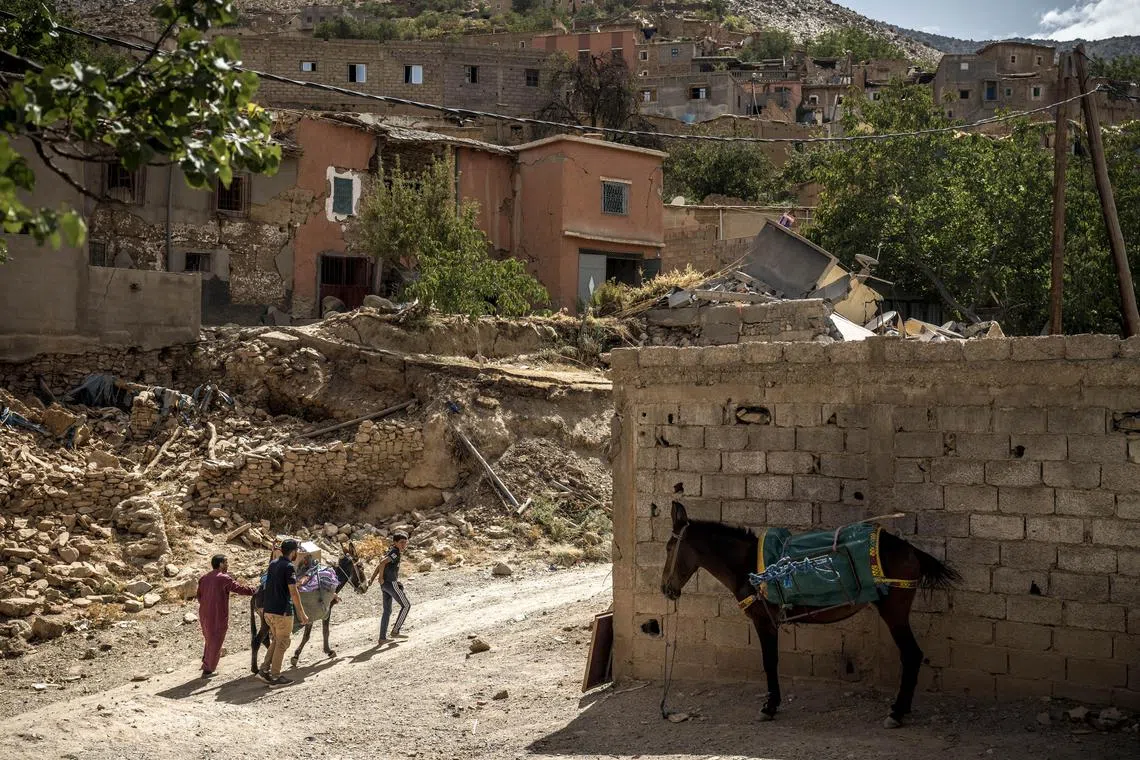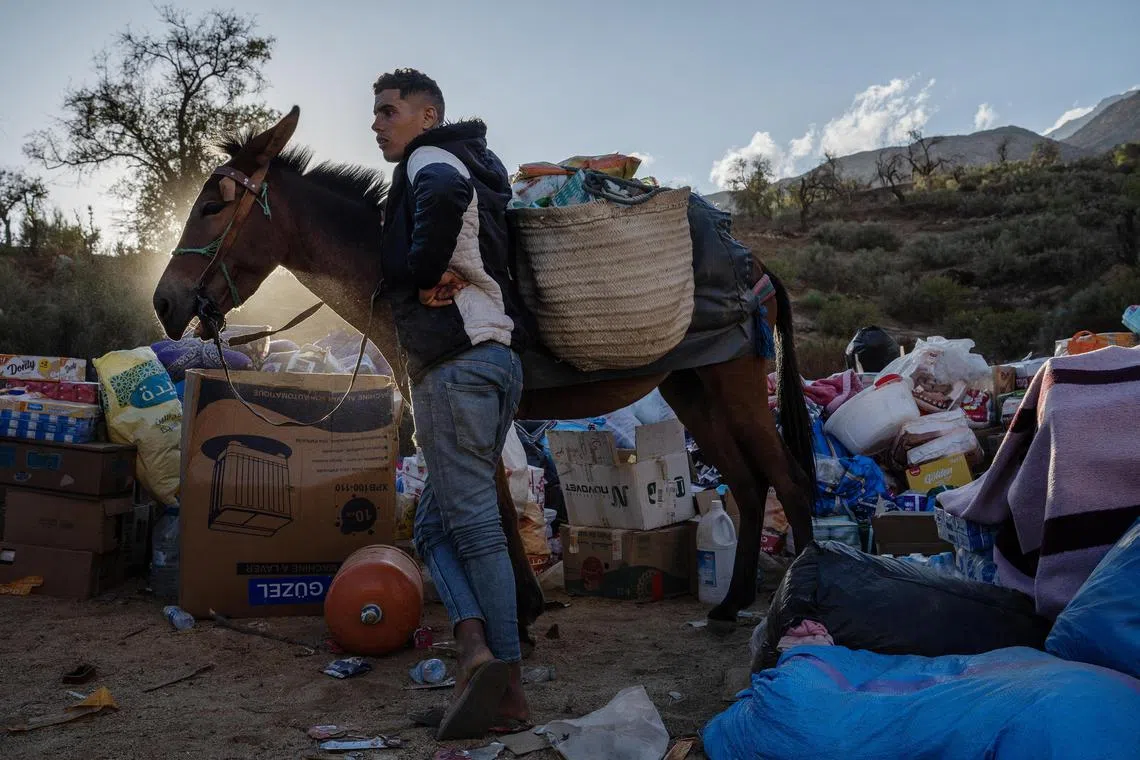Morocco quake survivors pack donkeys with supplies to reach cut-off villages
Sign up now: Get ST's newsletters delivered to your inbox

People use a donkey to transport aid to houses in Douar Tnirt, a village in the Atlas Mountains of Morocco that was hard hit by the earthquake.
PHOTO: NYTIMES
Follow topic:
OUTSIDE AGNDIZ, Morocco - With many roads still blocked by landslides, some Moroccan villagers on Wednesday loaded donkeys with supplies to take to communities in remote areas inaccessible by vehicle, while others picked through the ruins of their homes and mourned lost family members.
The 6.8-magnitude quake that struck the High Atlas Mountains
At a roadside stop, Mr Iydouhmad Mohamed, 42, from the remote High Atlas village of Agndiz, sorted through bundles of relief supplies for his village 12km away, which could be reached only by donkey. “Many people died in my village. Some families have lost 15 relatives. Others 12 or seven,” he said. “We especially need tents. What we have is not enough. People including children are sleeping out in the open air only covered with blankets.”
Morocco’s army is leading relief efforts, backed by aid groups and teams sent by four other countries, but the steep, rugged terrain and damaged roads have made the response patchy,
Mr Abdallah Houssein, 40, from the High Atlas village of Zawiyate said: “There is no road here. No one can remove the boulders which fell from the mountain. This is the sixth day after the earthquake. We are still sleeping out in the open air with our children. We have no blankets.”
With some survivors voicing frustration at the initially slow pace of the emergency response, King Mohammed VI on Tuesday made his first televised appearance since the quake,
Reuters reporters said there was a noticeable increase on Wednesday in the number of troops, police and relief workers near the epicentre. Tent camps were being set up or expanded and field hospitals were busy.
Medics treated broken bones, cuts and trauma injuries from falling buildings as well as assisted people with chronic conditions such as diabetes, with medical supplies scarce.
Families wiped out
In Outaghrri village, which was almost entirely flattened and where four people were killed, homeless survivors have spent the five nights since the quake sleeping outside in the school yard, one of the few spaces not covered in rubble.
“It’s really hard. It’s cold,” said Mr Said Ait Hssaine, 27. He said survivors were fearful of aftershocks and struggling to come to terms with the deaths and destruction. “We keep everything inside. You know people here are a little bit hard and they cannot show they are weak or they can cry, but inside you just want to go somewhere and cry,” he said.

A man waits with a donkey to receive supplies in Taroudant, Morocco.
PHOTO: NYTIMES
The village had just received a consignment of government-issued tents but they were not waterproof, a serious concern.
“Life was difficult here even when people lived in their houses. It snows here. Tents will not solve the problem,” said resident Ouazzo Naima, 60, who lost eight relatives in the quake.
In Talat N’Yaaqoub, a small town that also suffered extensive damage but has turned into an aid hub, patients were being treated in the back of ambulances parked in a long row alongside a tent camp for survivors.
In the same town, 19-year-old student Imane ait Said looked over the rubble of her house after returning from the city of Fez where she was studying. She lost 10 family members in the quake, including her brother. “All my memories are here, my family, my friends, neighbours,” she said.
“My brother was a very kind boy, all the neighbours knew him and cried over him when he died because whenever anyone asked him for something or do them a favour, he never refused... He did well at school – he just passed the second year of secondary school this year.” REUTERS

